
I grew up in a small Canadian town in the 1990s and 2000s. Despite its relatively small footprint, I couldn’t help but feel a general sense of cultural flattening where everybody in our age range across North America had a shared experience.
In the pre-Internet era, our collective attention was focused on far fewer platforms: you had TV with a relatively limited number of channels, you had only a handful of movies, and of course, you had print magazines that served as a gateway to (relatively) niche subcultures. For better or worse, this meant there was a sense of “shared experience” for many because our collective attention was far less distributed over different interests. Then the Internet came and took the idea of ‘niche’ and shattered it into thousands of fragments.
Before that, connectivity required effort and focus, and you couldn’t just pop in and out of a subreddit or a Discord server on a whim. For anybody growing up in this era, categorized social groups translated into strong identities. There was far less cross-cultural pollination, as you see now, where musical genres now color far outside of the lines drawn by the past. In high school, each group maintained their specific way of dressing, their soundtracks, and extracurriculars.
Between the skaters, the jocks, and the band geeks, getting in with the skaters was arguably the hardest. They were the ones most likely to roll through life on their terms, and participating in their world required a full buy-in. My brief foray into BMX doesn’t perfectly decode the social mores of skate. Still, I do vividly recall the subtle calculations that went into determining whether somebody was really about skating or a poser: a kid carrying around a deck with a pristine graphic on the underside? Poser. Mall grab? Poser. Wearing skate shoes without a sloppy Shoe Goo fix job? Poser.
To be welcomed into the community meant to subject oneself to the physicalities of skating. It was always ok to be a mediocre bench player as a jock, but the skaters often questioned one’s authenticity and commitment. At least, this is what many people figured.
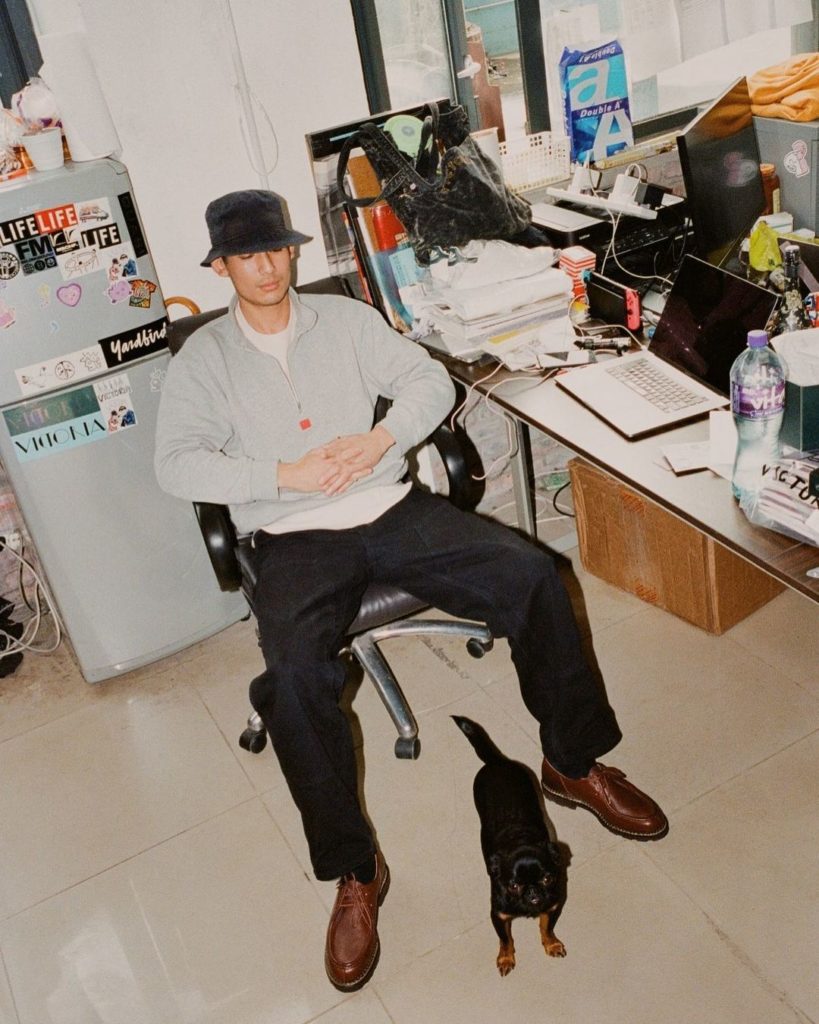
During lunch one afternoon in middle school, Arthur Leung found himself on the receiving end of an invite to go skating. Despite not skating or even looking the part, Arthur got pulled in. The traditional barriers of entry were inexplicably absent. The kids even went as far as going to the skate shop with Arthur’s mom to pick out a setup. And with that first seed, Arthur would turn this opportunity into something so much more, including the launch of Hong Kong-based skate brand Victoria Skate. Far from the established skate world of San Francisco, Arthur and Hong Kong required their own flavor of a skate community, but the core was still true.
You still needed to show up.
Arthur began the brand as nothing more than an outlet for his own curiosity about screen printing. The brand’s name draws inspiration from its home, Hong Kong, and the iconic Victoria Harbour. This body of water serves as a cultural and symbolic reference in Hong Kong. It divides Hong Kong Island from Kowloon and the New Territories. It also serves as a socioeconomic divide, between the more affluent and international population on the island versus the more local and multicultural citizens on the peninsula. But you cannot connect the two worlds without crossing the water. Ask most people who live in Hong Kong, and that 5-minute crossing, whether by ferry, car or subway is a psychological barrier. But crossing the water is not unlike Victoria’s goal of uniting the local skate scene, it takes a bit of commitment to show up and make that journey, but all are welcome.

Eugene: Do you remember your first experience skating?
Arthur: I was probably in Oakland at my cousin’s house. And I would dig through his garage to find toys. I was super young, like maybe 8, 9, or 10 and I found one of those old Toys ‘R Us shitty skateboards. I would sit on it and buttboard down to the park and just chill. I met some kids and they were like what the fuck is this thing you’re riding? They introduced me to catalogs back in the day like CCS and Active and they’d show me all the graphics and brands.
I was always intrigued by the names of these companies. Skateboard brands back in the day always had interesting names like Toy Machine and fun graphics like a skull. Like, what the fuck is that? I always thought that was really rad but for a while I didn’t touch a skateboard for a long time.
Eugene: So when did you get back into it?
Arthur:
It wasn’t until middle school. I was in the lunch line and then these random kids came and said ‘yo, we’re going skating after school, come through.’
Eugene: That’s all it took? Were you dressed a certain way?
Arthur:
I guess they liked my vibe. I wasn’t carrying a skateboard or anything. In a way it was accidental. The Asian kids always wore Nautica back in the day, and I always wore bright yellow Nautica shirts and big pants. I had bleached, gold tips. I guess I looked like a skater, but it was purely accidental. I didn’t even have a skateboard but they brought me to a skate shop with my mom.
Eugene: Yeah within skating that’s so unique is that it’s an activity that in itself isn’t like a traditional sport where there’s a goal. It’s not about scoring points. Getting together is almost part of the experience.
Arthur: It’s very random now that I think about it. It’s like, why did they come up to me and ask to go skate? That’s the first thing they said, and I didn’t even have a skateboard? So it was quite interesting. And that kickstarted everything.
Eugene: From a personality perspective you were down, right? You weren’t scared or anything even though you didn’t skate?
Arthur: I was just excited. Maybe I was just waiting for someone to bring me in. It’s intimidating to go to a skate shop when you don’t skate. Especially when you’re that young and you’re bringing your mom. To you, those dudes are cool. Way too cool. And you have no idea what the fuck you’re doing.
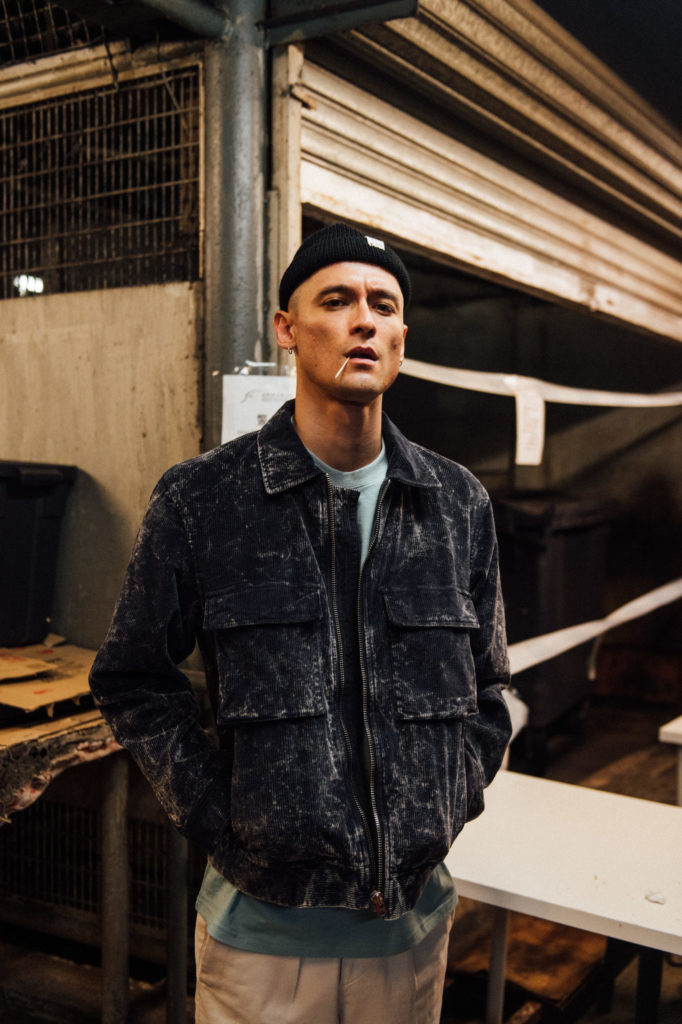
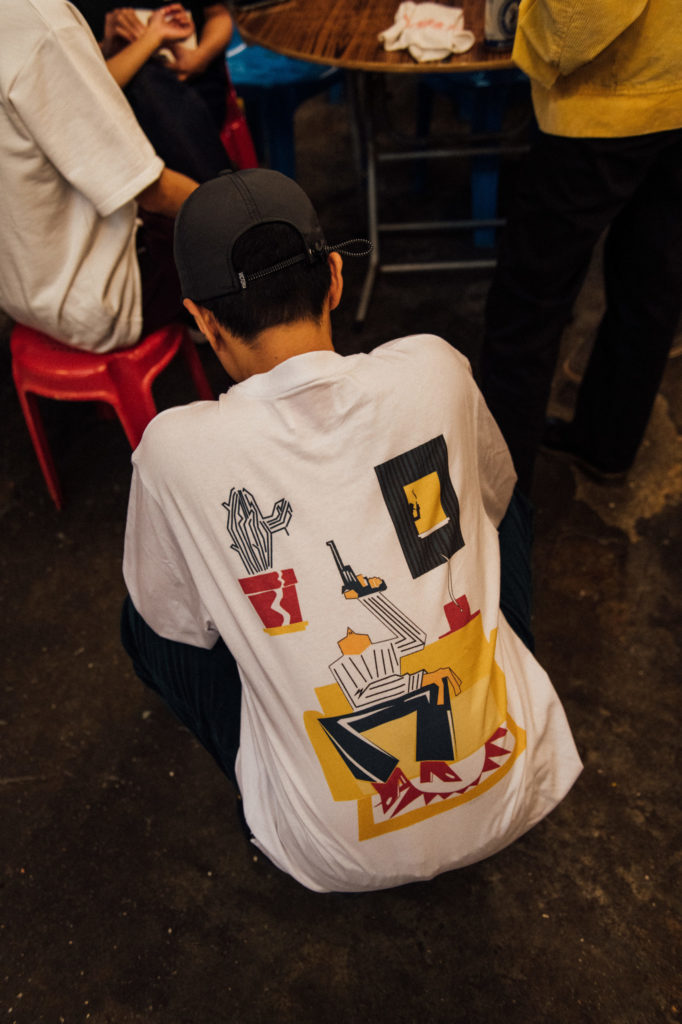
Eugene: How has that gatekeeping aspect of skate culture changed?
Arthur: The “too cool” type shit? I think it’s a lot different now. I’m sure there’s still a shop with that core skate shop mentality where the cool kids go and they’ll make fun of you if you don’t know what you’re doing. But the majority of it is very open now. It’s especially with how you treat people now, and if you treat people shitty at your shop, you’ll get a bad review and it’s game over for your business. I don’t know what’s the right word for that, but it’s gotten kind of soft in a way. It’s good and it’s bad.
Eugene: Can you expand on that a bit?
Arthur: It’s cool that the young kids can just show up at a skate shop now and welcome with open arms and they’ll be more than happy to help you. They’ll set you up with this new skateboard and even hook you up with a skate coach now.
And the skate coach is a thing now. When we were growing up, there was no such thing as a skate coach. At most, it’d be a YMCA skate camp and you’d go and figure it out yourself.
Eugene: I think it’s interesting to discuss because, with skateboarding, you’re putting your body on the line. There are actual ramifications to it. With other sports, it’s not really an expectation to inflict pain on yourself. You will fall many, many times skating. There are lots of people that understand, embrace, and also translate that mentality in skating alongside say fashion? I don’t think you’d call Victoria an all-out fashion brand, but it most certainly has some desire to overlap with that space.
Arthur: The brand started as just a little creative project and me wanting to learn how to screen print T-shirts and print on skateboards. Being so into skateboarding, it’s everyone’s dream to design your own board, design your own shirt, and give it away to friends. And that’s how it started.
The whole style aspect and getting into cut-and-sew was around something that I wanted to wear – caring more about the details and quality of everything.
Over time, it’s not just skateboarding. Skate trends constantly change. Ten years ago, everyone was wearing super slim girl jeans to go skate in, and now it’s getting looser or even bell bottoms or whatever. I like that aspect of the skate scene.
What you said earlier about growing up skating and constantly falling and failing and having that mental battle transcends to the other stuff that you do. The majority of the skaters that I know, or part of the crew do other things besides skating. That skate mentality goes into what they do on the side as well. These guys are picking up another hobby and they’re not gonna give up until they fucking kill it.
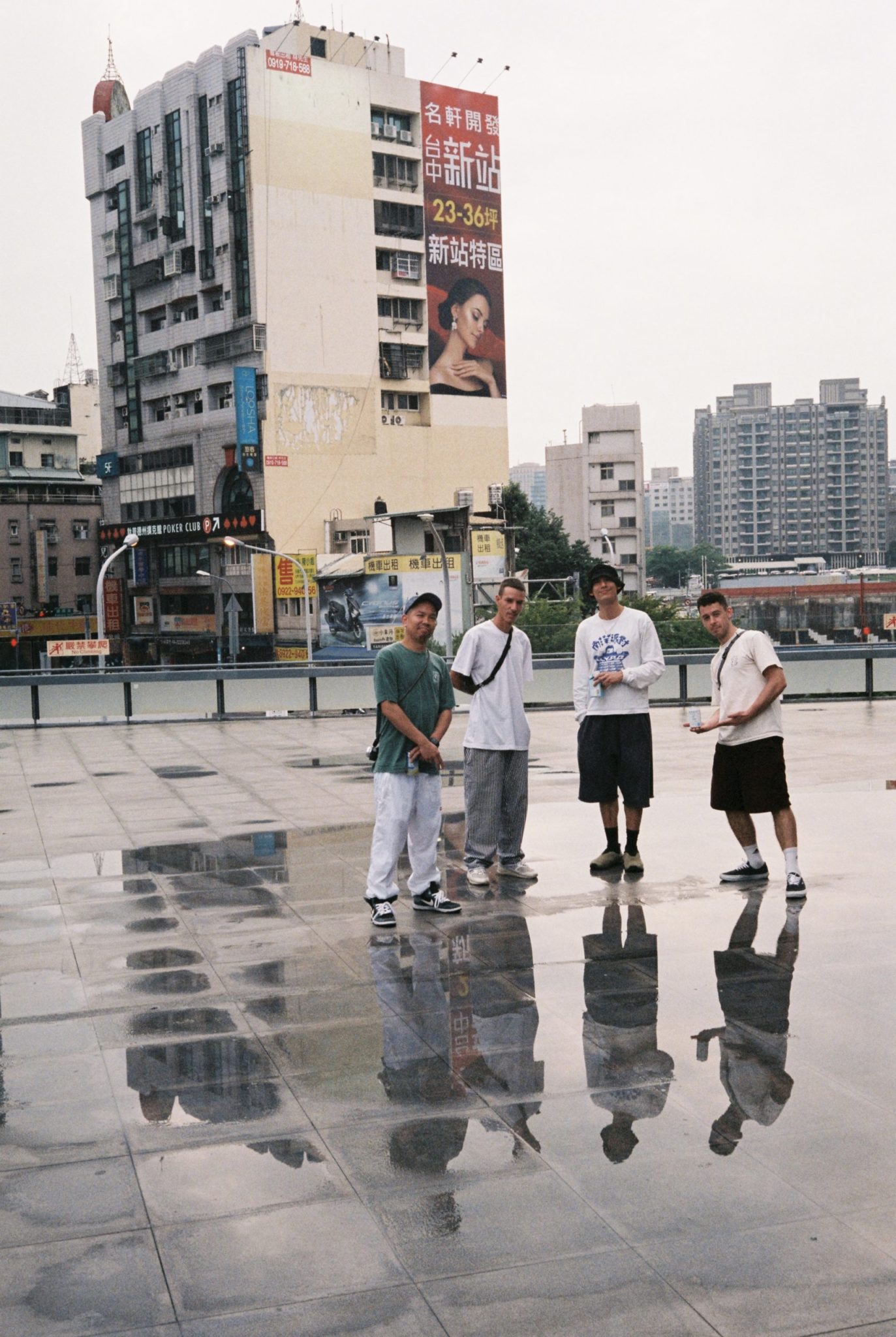
“The majority of the skaters that I know, or part of the crew do other things besides skating. That skate mentality goes into what they do on the side as well. These guys are picking up another hobby and they’re not gonna give up until they fucking kill it.”
— Arthur Leung
Eugene: What does that look like in practice?
Arthur: Skaters are the biggest critics of their own work; they’re perfectionists. With skating, you can land a trick easily. But doing it in a way like how you imagine in your head or making it look good on camera is different. It’s considering things like your arm’s position when you’re landing? Where is it in midair? That’s what a skater looks at and it’s really detailed. I like how that aspect of skating translates over to whatever you do in life.
Eugene: So fast fast forward, you’re not in SF anymore but in HK. How did you end up here?
Arthur: I was working for a skate distribution in San Francisco when I was 19, doing warehouse stuff and then learning how to do sales. One day I had an idea to go back to Hong Kong and see the city I was born in, and live in it as an adult. I used my skate distribution connection to get a flight over. They introduced me to two skate shop owners, 8FIVE2 and HKIT. I was gonna come to Hong Kong for just a month and didn’t buy a return ticket. I ended up staying for a year and a half. When you’re here, all the skaters embrace each other, but also at the same time, like any place, there’s always the there’s a lot of shit talking. There’s a lot of skate beef.
When I came back to Hong Kong and wanted to do the brand full-on, I got this feeling that everything was a little bit divided with the big dogs. In a weird way, I didn’t know how to explain it. I just wanted to do something that could bridge the gap and welcome everyone.
Eugene: I used to go to HKIT to hang out every other weekend when I came back cause they had a Nike SB account and a friend knew the owner, Kit. But I could never really get into the brand side of skateboarding. I always saw skating as this sacred subculture. It was pretty much binary. Either you were about it, or you weren’t. Dressing like one or trying to borrow some of the tangible bits of one of the last and yet-to-be fully-commercialized subcultures was off for me.

Arthur: You’re right, you do need to commit to it. But also it’s that intimidation thing I was talking about. It’s weird to get into skating as an outsider.
Eugene: That’s true. Perhaps it was that older school perception. The legendary shitty service at Supreme seemed like “a feature not a bug” of the brand. But seeing Victoria up close is and was very different. People from all walks of life seemed to vibe with the brand.
Arthur: When I first came back to Hong Kong, I didn’t know a lot of people and met everyone at the skatepark or the skate shop. I felt welcomed by locals and expats alike.
Eugene: Just to cut in for a second, but for those unfamiliar, there’s often a divide and fragmentation of communities across Hong Kong. There are expats and locals and they don’t always commingle.
Arthur: Yeah. I felt welcome and would skate with anyone. When the brand officially started, that’s the same direction where I took it. I don’t see you as an expat. I just see you as a homie. It’s very organic and now the crew is not just Hong Kong. Maybe I’m overthinking and I may get some hate from people in the local scene, saying ‘oh fuck why are some kids in Norway or Barcelona or Japan or whatever riding for Victoria Hong Kong, when you claim to be a Hong Kong brand?’
But I think that’s stupid because just because you’re Hong Kong-based doesn’t mean you can’t take care of other people in other countries. And one of the biggest joys I’ve had was to bring the skate crew over from Norway, Barcelona, Taiwan, and all these different places to experience Hong Kong. Having them try hot pot for the first time and tasting new textures, shit like that is more meaningful to me.
Eugene: One thing I always loved when I watched skate videos was how it was like 10 guys sharing a hotel room. The intention of being together is more important than anything else. The connections that come with skating are super strong: it’s drinking, partying, filming videos. But when you came to Hong Kong from arguably one of the world’s skate meccas in San Francisco, what was that like?
Arthur: I didn’t really think about it much. In Hong Kong, there’s definitely a different level of skill. San Francisco is the skate mecca and it’s fully developed. Coming back to Hong Kong, there’s a lot of potential in it and I want to help Hong Kong and the next generation get there. I want to reach a point where Hong Kong is the destination spot for pros that come through as a cool and fun spot to skate.
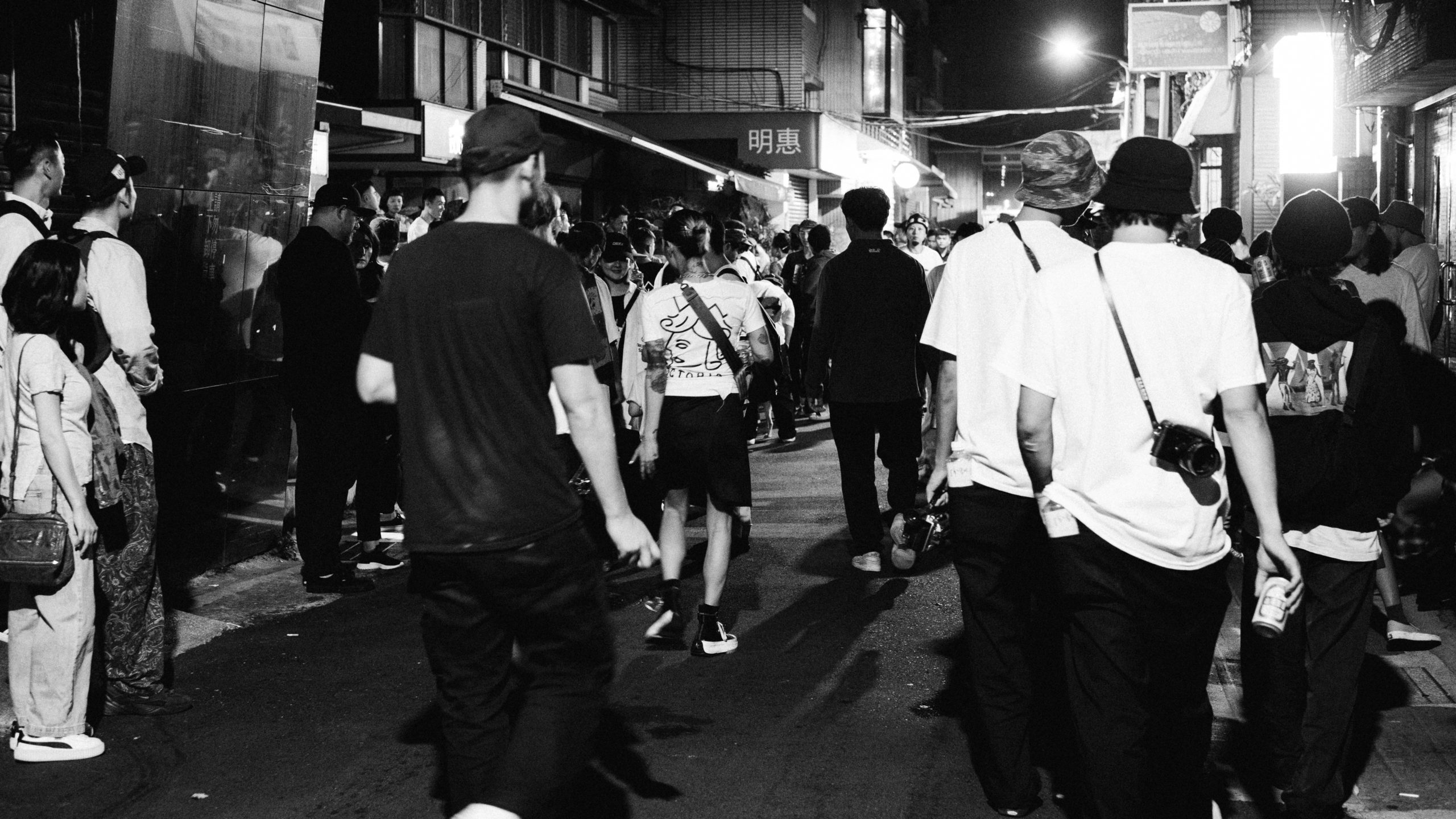
Eugene: Was it different coming into Hong Kong and seeing how corporate everything is? How has that changed?
Arthur: The four or five biggest shoe brands that are supporting all the skaters are corporate brands. When you’re younger you think differently. But now I get it while running my own small brand. adidas, Nike, and New Balance coming in helps skaters a lot more and gives them more opportunities. They get paid better, they can go on more trips. I don’t think it’s a bad thing if they’re really trying to come into the skate scene with good intentions, and fully pay these amazing skaters to go on more trips and film more videos and do more content. I get why people hate on it, but if you only rely on quote-unquote “skater-owned” shoe brands or clothing brands, it’s gonna be a lot harder.
Eugene: What does that mean for you as a small brand against bigger brands?
Arthur: We’re a skater-owned brand. It’s important. But everyone knows skaters don’t buy shit. You know what I mean? It’s important to have both worlds and with the same intention to try to push this culture and grow it and give more opportunities to be skaters. It’s amazing that skateboarding is an Olympic sport. The government’s backing it in Hong Kong. The local scene has been battling for the last 20 years to have the government help out. Obviously, there are skate parks, but the government’s funding a lot more things, and you’re seeing local skaters making a living off teaching kids how to skate. It could sound cheesy to some people. I find it cheesy too, but I get it. And I think it’s cool that they can do what they love and make a living off it. It wouldn’t have happened if it wasn’t for the Olympics or these kinds of corporate brands that are helping,
Eugene: Has this also hooked you up with any opportunities as well?
Arthur: I’m not trying to call it a skatepark, but we’re working on a “skateable space.” Fucking cheesy, but whatever. It’s a skateable space with a kiosk up front, where we can do pop-ups, and bring in other local brands like Yat Bui or even, MAEKAN. We can do whatever there. But in the back it’s just this well-paved, beautiful granite, and very minimal skate spot. With the Hong Kong government funding, a lot of skate parks are getting built within the next few years in Hong Kong. But I wanted to do it the Victoria way. I didn’t want to do another type of skate park with a hip and mini ramp. There are 20 other skate parks like that in Hong Kong.
“I thought I would have a solid team, a solid crew of people, and I would skate a lot more. I thought, ‘run this brand and I’m gonna be out with the crew. We’ll be out filming skating all the time and everything will be perfect.’ Complete opposite.”
— Arthur Leung
Eugene: How did you approach this project in the end?
Arthur: We asked, what’s the Victoria touch to it? What can we do differently? I pitched them this idea that growing up skating, all a skater really needs is two obstacles.
If you have one really long ledge or something that you can grind on – where the surface is amazing and you can hear the sound of the grind – and something to slide on,that’s it. Look at SF, look at the Universitat in Barcelona. Where do all the skaters hang out? It’s this one plaza with one ledge.
That’s really all you need and that’s what we’re going for. There are no fucking ramps, no half pipes for you to train on. If you want to do that, go to the other skate parks. There are so many to choose from. Ours is something different.
Eugene: Do you remember the first time you saw someone that you didn’t know wearing Victoria?
Arthur: Yeah! At the Tai Koo MTR. That shit is crazy to me. It was a hoodie during the winter time and we just printed this graphic on our own. It was a multi-layer print and we fucked up many times and wasted a bunch of money. It was unreal and a really good feeling. It’s almost like landing your first kickflip. It’ll never get old for me.












Eugene: What did you think it’d be like to start Victoria and now having run the brand, what has been the reality?
Arthur: What I initially thought was, I didn’t think it would be that fucking hard to make clothes that I care about. Sometimes I question whether I need to care that much about the fucking fit and the weight of this t-shirt? It would make my life a lot easier if I just went the route of graphic print, send out, and done.
Instead, I’m nitpicking all these things. I feel like this is always gonna be this battle in my head. I made a lot of mistakes along the way. I thought I would have a solid team, a solid crew of people, and I would skate a lot more. I thought, ‘run this brand and I’m gonna be out with the crew. We’ll be out filming skating all the time and everything will be perfect.’
Complete opposite.
I’m just here in the office constantly executing these projects, designing, and working with other people, collaborators, and other brands… zero skating. It’s so hectic for me, but I think I can do it. I don’t feel stressed at all, which is the craziest thing. I’ve never felt this busy in my life, but I’m so excited. I probably haven’t touched my skateboard in fucking two months. My legs are getting weak.
We recently took a trip to Taiwan. We were out there for two weeks and just pushing, skating every single day with the team. That’s what inspires me. I was rusty, obviously. My legs were fucking shaking and I couldn’t do the tricks I wanted to do. It was frustrating, but seeing them skating, and being happy. That’s what inspires me.

























